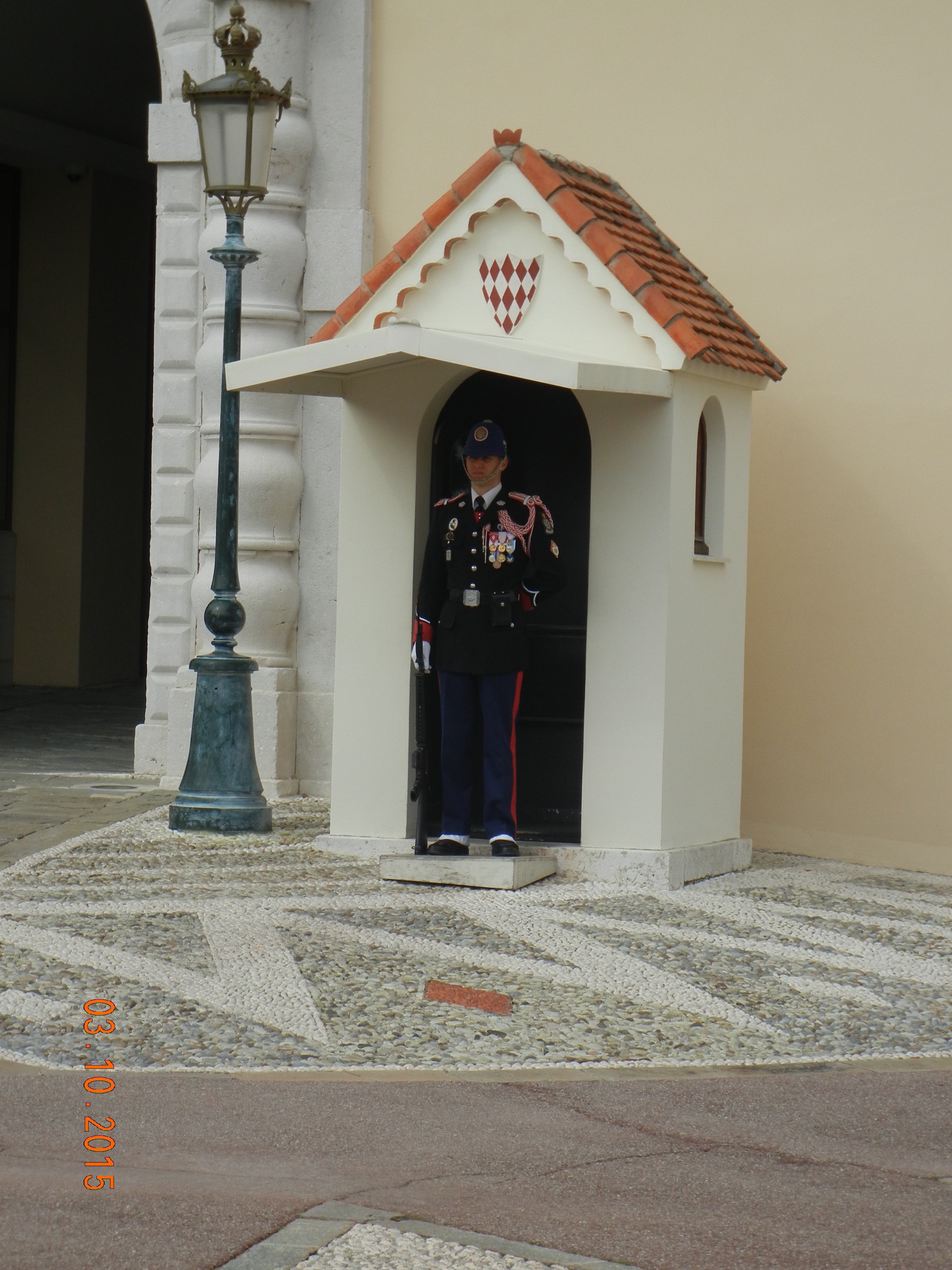I chose this photo to contrast Rachel’s photo of a Chinese guard, but in similarity to her photo, certain visual cues allow viewers to recognize that this person is a guard. However, this guard incites a different feeling and social meaning. In this instance the guard is a spectacle himself, he carries importance other than signifying that something valuable is behind the wall. His apparel is highly decorated, drawing your eye specifically to him and showing status or bearing resemblance to the military, people who are given much respect in European societies like this. This contrasts with the uniform of the Chinese guard that is plain and recognized as a blue-collar type of dress. The Monaco guard also stands in a special outcropping that draws attention to him and appears sophisticated, unlike the Chinese guard who simply stands on the street. At tourist destinations like the Prince’s Palace in Monaco there is a changing of the guard ritual at specific times that people often come specifically to watch, further emphasizing their role as a spectacle.
In this case the guard is connected to the affluence associated with what is inside the palace. The guards employed at the Prince’s Palace are highly trained, skilled “gunsmiths, accountants, electricians, IT specialists, mechanics, carpenters, painters, plumbers, radio specialists, cabinet makers, and designers, which makes their unit completely independent of outside assistance” (Monaco). The posture and expression with which they stand, along with the focus the exhibit to never break attention, is associated with professionalism, a code for higher class, and again the military, a code for strength and respect.
For this photo, I feel that the social meaning around the image is how society is trained to admire royalty. We have been trained to recognize signs of what is considered high class, and then we recognize that their status is over ours. They retain their power by making themselves a spectacle that society looks at with awe and admires. The photo does not show the power differential by contrasting the guard with what is supposedly inside, but by contrasting the palace as a whole unit, including the guard, with people who are outside viewing the spectacle or the representation of it in this image.
I took this picture because I found this guard extremely amusing. His job appears to be simply standing to be viewed, which seemed like an odd form of employment to me. Being American, I am not exposed to “royalty” in the same extravagant way as the societies in Europe. It drew my attention because it was different from my culture, somewhat exotic, but I was nonetheless trained to understand the signs of royalty and recognize their standing above me as something to be admired.
References
-Monaco, Palais Princier de. “Sovereign House.” Palais Princier De Monaco, 2014, www.palais.mc/en/sovereign-house/the-palace-guards-1-24.html.

Commentary on Rachel Tanur's Works: Chinese Guard